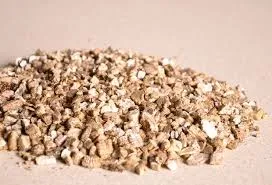Nov . 25, 2024 10:05 Back to list
High-Quality Castable Refractory Materials from Leading Manufacturer for Industrial Applications
The Significance of Castable Refractory Materials in Modern Industries
In various high-temperature industries, the choice of materials plays a critical role in ensuring efficiency, safety, and overall performance. Among these materials, castable refractory materials stand out due to their exceptional thermal resistance and versatility. As manufacturers strive to meet the evolving demands of sectors such as steel, cement, ceramics, and petrochemicals, understanding the role and benefits of castable refractory materials becomes essential.
What Are Castable Refractory Materials?
Castable refractories are a type of refractory material that can be poured into molds to create industrial linings, shapes, and structures. Unlike traditional bricks, which require precise dimensions and careful installation, castables are mixed with water and then poured, making them suitable for a variety of applications. This adaptability is particularly useful in settings where complex shapes or repairs are needed.
Manufacturing Process
The production of castable refractories involves combining raw materials such as alumina, silica, and other additives, which are then processed into a castable form. The manufacturing process typically includes careful selection of materials to enhance specific properties, including thermal shock resistance, mechanical strength, and chemical stability. Advanced techniques in compounding and formulations allow manufacturers to produce tailored solutions that meet the precise specifications of various applications.
Applications and Benefits
castable refractory material manufacturer

One of the primary advantages of castable refractory materials is their ability to withstand extremely high temperatures, often exceeding 3000°F (1650°C). They are widely used in furnaces, kilns, and incinerators, where they line the walls and protect the underlying structures from thermal degradation.
Additionally, castable refractories offer excellent thermal insulation, which leads to improved energy efficiency. By reducing heat loss, industries can enjoy significant cost savings on energy bills while minimizing their environmental impact. Moreover, the ability to create custom shapes helps facilitate easier installation and reduces the overall downtime needed for repairs or replacements.
Trends in the Industry
As industries evolve, so do castable refractory materials. There is a growing trend toward eco-friendly formulations, which include the use of recycled materials and lower carbon emissions during manufacturing. The demand for sustainable solutions is pushing manufacturers to innovate, leading to enhanced performance while contributing positively to environmental goals.
Conclusion
In conclusion, castable refractory materials have become indispensable in modern industrial applications. Their unique properties not only enhance the durability and efficiency of high-temperature operations but also support sustainable practices within various industries. As technology and materials science continue to advance, the future looks promising for castable refractory manufacturers, offering opportunities for growth and innovation in this vital sector. Understanding and leveraging the benefits of these materials will be crucial for industries aiming to stay competitive in an increasingly challenging market.
-
Fe-C Composite Pellets for BOF: Enhance Steelmaking Efficiency
NewsAug.07,2025
-
Eco-Friendly Granule Covering Agent | Dust & Caking Control
NewsAug.06,2025
-
Fe-C Composite Pellets for BOF: High-Efficiency & Cost-Saving
NewsAug.05,2025
-
Premium Tundish Covering Agents Exporters | High Purity
NewsAug.04,2025
-
Fe-C Composite Pellets for BOF | Efficient & Economical
NewsAug.03,2025
-
Top Tundish Covering Agent Exporters | Premium Quality Solutions
NewsAug.02,2025
